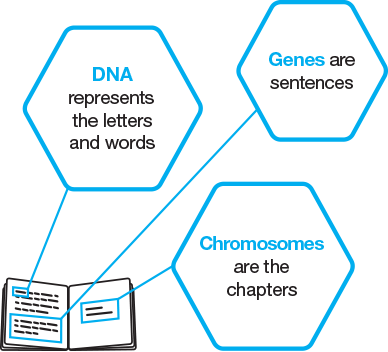Fabry is caused by genetic mutations – they are usually passed on from parent to child, but in rare cases they can be unique to the individual. 1,2
What is a mutation? 3,4
Every cell of your body is programmed to work in a particular way, for example to help with digestion, keep your heart beating, or fight infections. To do its job properly, every single cell needs a set of instructions.
DNA is ‘read’ by the cell and provides these instructions. A gene is a section of DNA that programmes one specific instruction. The genes themselves are grouped into separate units called chromosomes.
You can think of this like an instruction manual where:

Sometimes there are changes in the DNA – these are called mutations (variants). You can think of these like misspelt words – one wrong letter can completely change the meaning of the word.
CAR
CAT
How do genetic mutations lead to Fabry? 1,5
Fabry is caused by a variety of mutations in a gene called GLA which provides the instructions to make an enzyme (a-galactosidase A).
Normally this enzyme helps break down certain sugary-fatty substances (glycosphingolipids) in the cells of our body – but the mutations mean it can’t do its job. This leads to a build-up of those substances causing the symptoms of Fabry.
Is Fabry always inherited? 2,5
Fabry and its mutations are most often inherited from a parent. In rare cases it may not be inherited, the Fabry mutations may spontaneously occur and be unique to the individual – these are known as de novo mutations. However, this individual may still be able to pass the disease onto their children.